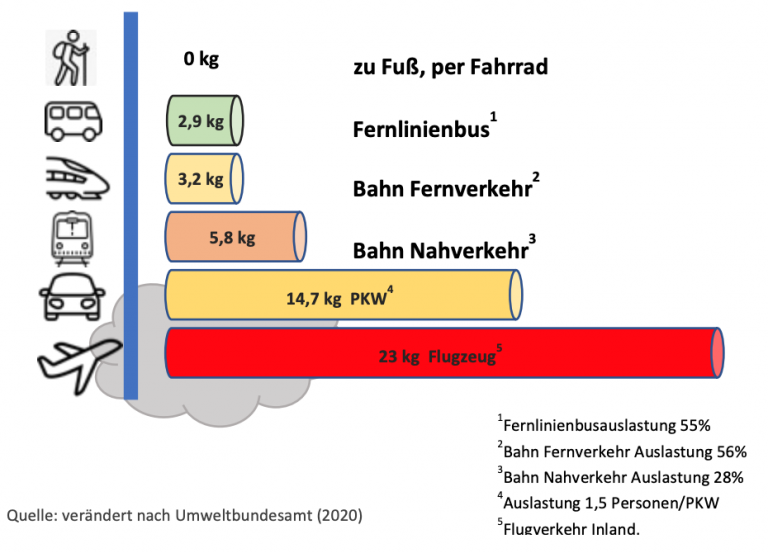)
Webinar and tips on ‘climate-friendly travel’
An interactive webinar series as part of the Futouris project ‘Climate Protection at the Counter’ focuses on the topic of more climate-friendly travel.
)
The aim of the Futouris project ‘Climate Protection at the Counter’ run by the Futouris Reisebüro-AG is to raise awareness and knowledge among travel agents on the topics of climate protection and sustainability. To this end, an interactive webinar series on various topics such as CO2 compensation, sustainable accommodation and climate protection in travel agencies was designed in collaboration with the climate protection organisation atmosfair and travel agency coaches René Morawetz and Saskia Sánchez.
The first webinar took place on 5 March 2020 with over 65 participants on the topic of ‘climate-friendly travel’.
75% of the CO2 emissions of a trip are generated during arrival and departure. This is where the greatest potential lies for reducing the carbon footprint of a holiday. But how, and above all, how can this be done while still taking customer wishes into account?
Find the online seminar here: Futouris Online-Seminar "Klimafreundliche Anreise"
In our 45-minute webinar, René and Saskia raised awareness among travel agents and showed them how they can make travel more climate-friendly. Flying causes the most CO2 emissions (23 kg per 100 passenger kilometres), closely followed by driving at 14.7 kg, while long-distance rail travel causes just 3.2 kg of CO2. For this reason, travellers should try to reach their destination by train or bus. On the Berlin-Paris route, long-distance rail travel causes only 10% of the CO2 emissions of air travel (265 kg compared to 26 kg)!

In addition to actively contributing to climate protection, travelling by train offers other advantages:
Relaxed travel, as there are no security checks or long waiting times at the gate.
More room
No restrictions on luggage
No expensive transfers from the airport to the city.
What if the customer wants or needs to fly? Even air travel can be made more climate-friendly with a few tips:
Adjust the length of the trip: The further away the destination, the longer you should stay there. Advantage: The customer has less stress and more time at their destination and returns feeling more relaxed.
Choose direct flights: Take-off and landing consume a particularly large amount of kerosene, so use direct flights whenever possible and travel to the airport by train within the UK.
Use more climate-friendly airlines: If a route is offered by several airlines, the most climate-friendly airline should be used. In the atmosfair Airline Index, the climate protection organisation annually evaluates and ranks 190 airlines according to their climate efficiency in the categories short-haul (up to 800 km), medium-haul (up to 3,800 km) and long-haul (from 3,800 km). The most climate-friendly airlines include TUIfly, Sunexpress and Condor.
Offset CO2 emissions: To offset the CO2 emissions generated by the flight, customers can invest in reputable climate protection projects. The same amount of CO2 that was generated by the flight (e.g. through kerosene combustion and contrails) is saved elsewhere. This involves investing in solar, hydroelectric, biomass or energy-saving projects that do not cause CO2 emissions or reduce them.
All of the tips presented can be found in the handout, which can be used as a practical aid at the counter.
